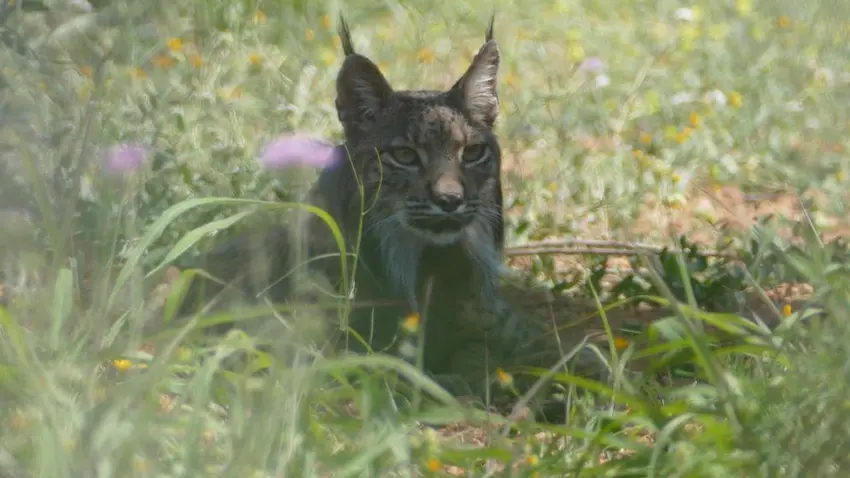A lynx was photographed by wildlife officers in woodland outside Barcelona on Tuesday, although the exact location has been kept secret to protect the animal.
Tècnics del Cos d’Agents Rurals van observar i fotografiar el passat 29 de maig un exemplar de linx ibèric (Lynx pardinus) a àrea metropolitana Barcelona en un operatiu de recerca executat arran de diversos avisos d’albiraments d’aquest animal a la zona.https://t.co/qw9f0vJ9d8 pic.twitter.com/R2Y22csIeS
— Agents Rurals (@agentsruralscat) June 1, 2018
It has been identified as Litio, a four-year-old male born in a captive breeding project in Acebuche in Spain’s southwestern Huelva region and released a year later in Portugal.
Wildlife experts have no idea how the cat made the journey to the northeast of Spain but were able to identify him through his tracking collar, although it stopped emitting a signal more than a year ago.
But the presence of lynx in the Barcelona area will be short lived as wildlife rangers plan to capture the animal and release him in a more suitable area.
“The area where it has been located is not a safe area for it to stay as It’s too close to build up areas and to roads,” a spokesman at the Generalitat told La Vanguardia newspaper.
“We plan to capture it and safely release it in a more suitable environment.”
Lynx pardinus was once found throughout Spain, Portugal and parts of southern France, with a population at the turn of the 20th Century estimated at more than 100,000.
However, years of over-hunting coupled with the loss of forests cut down to make way for agriculture, saw the population drop to below 10,000 by the end of the 1980s.
Lynx numbers were further devastated as construction projects and new highways eroded their territory and myxomatosis all but wiped out the rabbit population, the staple diet of the lynx.
By 2002, the Iberian lynx had become the most endangered cat and was on the verge of extinction with less than 100 left in wild in two isolated pockets of Spain.
But the Spanish government launched an emergency campaign and established the Iberlince captive breeding programme which would culminate in them being reintroduced to the wild.
READ ALSO: Drones to keep watchful eye in the sky over endangered Iberian lynx
In the last census of 2017, 598 animals were recorded living colonies in nine different parts of southern Spain and Portugal.
Three years ago it was confirmed that lynx had returned to the wooded hills of the Guadarrama valley outside Madrid after an absence of more than 40 years.
Roads remain the biggest danger to the lynx. Last year a record 31 were Lynx were killed on roads in southern Spain.

Comments